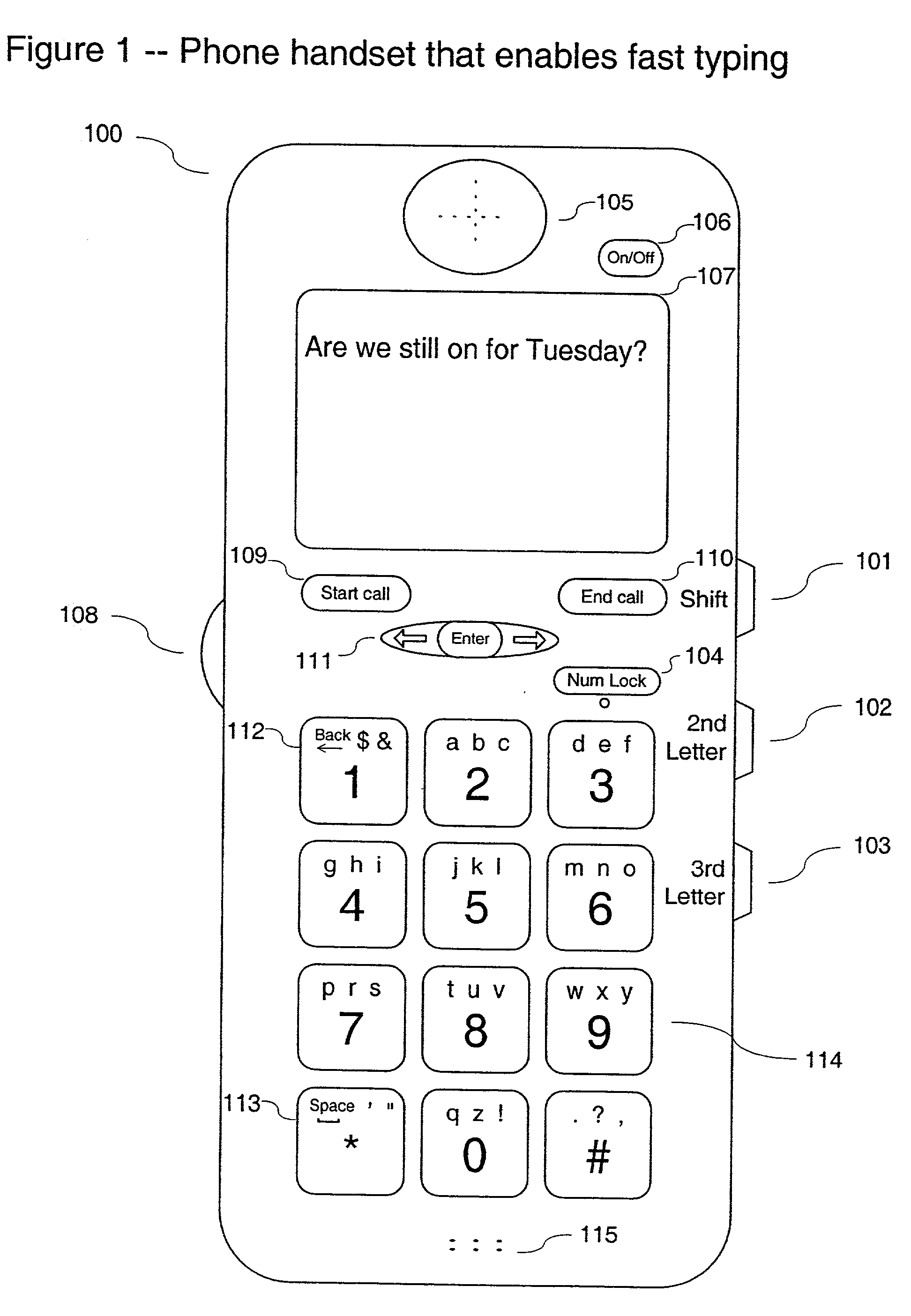Hand-held device that supports fast text typing
a hand-held device and text typing technology, applied in the field of hand-held devices, can solve the problems of slow and awkward typing on most cell phone handsets (and other hand-held devices), prone to errors, and current handset designs that have not been very successful in facilitating text typing within constraints, etc., to achieve fast touch-typists typing quickly, easy to learn to type, and the effect of quick typing
- Summary
- Abstract
- Description
- Claims
- Application Information
AI Technical Summary
Benefits of technology
Problems solved by technology
Method used
Image
Examples
Embodiment Construction
[0017] The first preferred embodiment of the present invention adds three new buttons to the side of a typical cell phone handset, as shown in FIG. 1. Although FIG. 1 is drawn showing a display, it is not necessary that there actually be a display, depending on the requirements of the hand-held device implementing my invention. For example, my invention could easily be implemented in a hand-held device that does not require a display. The three new side-buttons seen in FIG. 1 are a "Shift" side-button 101, a "2nd Letter" side-button 102, and a "3rd Letter" side-button 103. In contexts where the phone is being used to type text, a user would hold the handset depicted in FIG. 1 in the left hand and use that hand's index, middle, and ring fingers to hold in combinations of the "Shift", "2nd Letter", and "3rd Letter" side-buttons, respectively, while simultaneously using the right hand to press keys on the face of the handset.
[0018] If none of the side-buttons are held in, then pressing...
PUM
 Login to View More
Login to View More Abstract
Description
Claims
Application Information
 Login to View More
Login to View More - R&D
- Intellectual Property
- Life Sciences
- Materials
- Tech Scout
- Unparalleled Data Quality
- Higher Quality Content
- 60% Fewer Hallucinations
Browse by: Latest US Patents, China's latest patents, Technical Efficacy Thesaurus, Application Domain, Technology Topic, Popular Technical Reports.
© 2025 PatSnap. All rights reserved.Legal|Privacy policy|Modern Slavery Act Transparency Statement|Sitemap|About US| Contact US: help@patsnap.com



